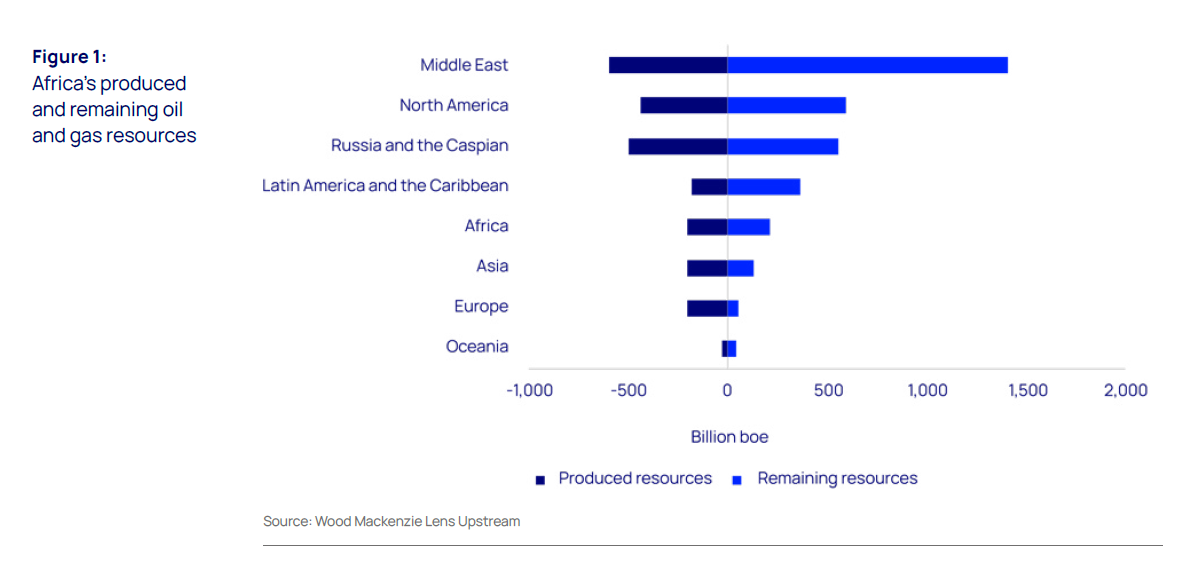- Africa's renewable power set to grow by 600% over the next decade
- Increased hydrocarbon production and investment needed
Despite attracting just over 2% of global energy investment, Africa looks to alleviate energy poverty through an inward approach and expansion of both conventional and renewable power generation capacity as the path to energy sufficiency, according to Wood Mackenzie's latest Horizonsreport.
"Africa is incredibly rich in natural resources; however, it faces severe energy poverty with 600 million people lacking electricity access and four-fifths relying on traditional cooking fuels," said Mansur Mohammed, Africa Upstream & Carbon Management New Business Development at Wood Mackenzie. "Africa's minerals power global clean energy transitions while the continent itself remains energy-poor."
Africa's total solar and wind capacity is forecast to grow by almost 600% over the next decade, according to "Asset rich, energy poor. Maximising Africa's natural resources to transform the continent" report by Wood Mackenzie. Africa is home to less than 2% of current global solar capacity, and the pace of African solar installations fell year-on-year in 2024. Despite this slowdown, overall solar capacity across Africa will increase from 11.4 GW in 2021 to 31 GW by the end of this year.
Africa dominates global production of critical minerals essential for the energy transition. The continent accounts for over two-thirds of global cobalt mine output and around 20% of copper supply, while also producing significant volumes of platinum, manganese, lithium, and rare earth elements. These minerals are crucial components in batteries, renewable energy technologies, and global electrification efforts.
Most mineral production is exported to China for processing, creating a missed opportunity for domestic value addition and energy development. Given the scale of risk-tolerant Chinese investment in resource-rich African countries, this presents Africa with an opportunity to strike deals with China for investment in clean energy projects at home in return for access to its critical mineral resources.
"On the other hand, Africa faces a massive underutilization of its hydrocarbon wealth - only one-third of discovered oil and gas volumes have been commercialized, representing one of the world's lowest development rates despite vast resources" said Mohammed at Wood Mackenzie. "Major barriers include poor governance, weak regulation, limited local gas markets, which all contribute to a lack of access to competitive finance for local companies." Wood Mackenzie forecasts Africa's oil and gas sector will deliver an average US$109 billion annually in government revenues through 2030, though this could increase significantly if more resources are developed.
Despite this situation, African oil and gas producers have set ambitious production targets. Nigeria aims to double oil production to three million barrels per day and gas output to 12 billion cubic feet per day by 2030, while Angola left OPEC in 2023 specifically to facilitate greater liquids production. These ambitious goals are gaining traction, with fiscal incentives introduced by regulators in both countries attracting nearly US$20 billion in project final investment decisions since 2024.

Africa is a significant player in global liquefied natural gas (LNG) markets, accounting for almost 10% of worldwide supply, with substantial growth potential ahead. The continent leads in floating LNG technology, operating six out of 10 projects globally.
Despite its export success, Africa consumes merely 4% of global gas supply and has the world's lowest per capita consumption at less than one-quarter of the global average. African governments are increasingly recognising the opportunity to develop domestic markets alongside export projects. Cross-border pipeline proposals demonstrate growing regional cooperation, with gas-to-power transitions offering the most economic route to monetise resources.
"By 2050, Africa will be home to around 2.5 billion people, more than one billion more than its current population. The continent possesses the resources to achieve energy sufficiency. The challenge lies not in availability but in mobilising capital, improving governance, and implementing innovative solutions to unlock the continent's immense energy potential for its people," said Mohammed.
Africa accounts for only 3.5% of global emissions. An argument can be made that it needs to draw on all of its resources to industrialise, while the rest of the world needs to decarbonise faster. The continent's balanced approach - maximising both renewable potential and responsible hydrocarbon development - offers the most viable path to energy prosperity for future generations.
